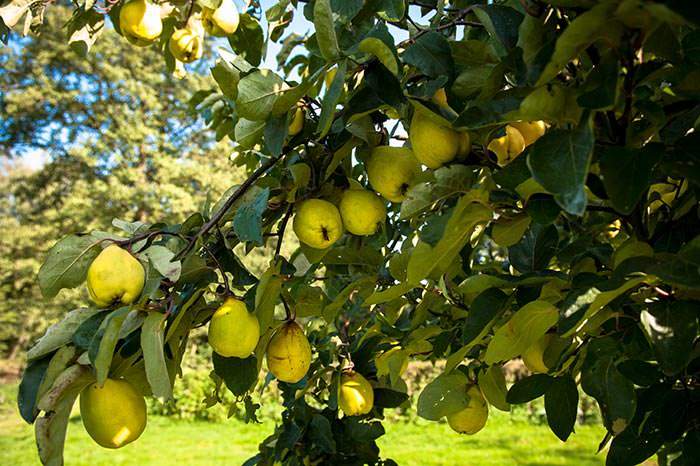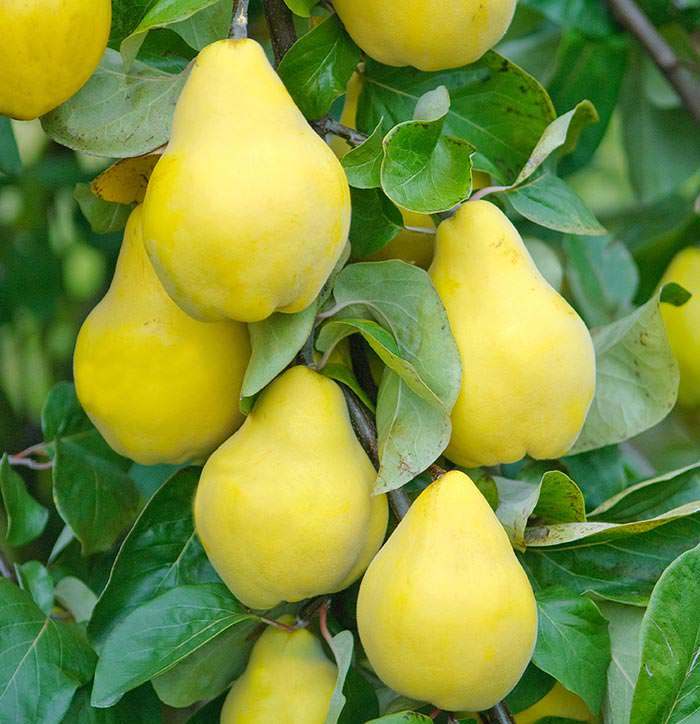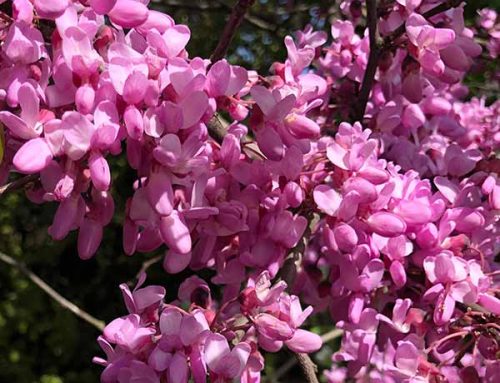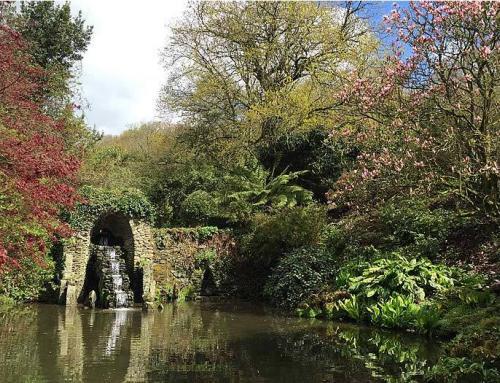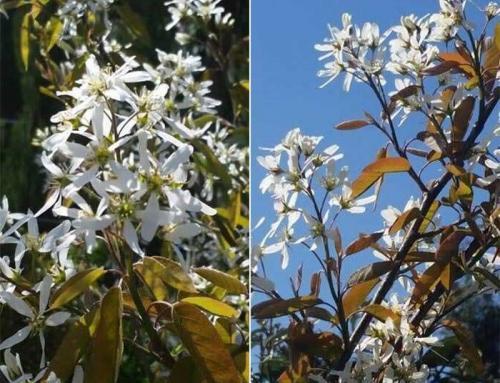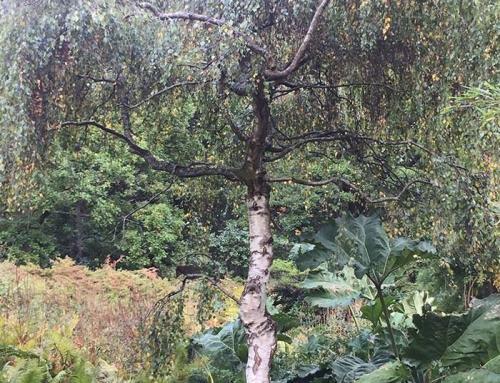Quince or Cydonia Oblonga, to give it its full botanical name, is a heritage fruit tree that is slowly but surely finding its way back to Britain’s gardens, where its pretty blossoms, versatile fruit and good autumn colour offer multiple seasons of interest. As medium-sized cultivars, quince trees grow to be around 3 to 4.5 metres tall once fully mature. Even though it is quite lovely when enveloped in pink-tinged flowers during the spring, quince is at its best in the autumn. Contrasted by warm hues of yellow, orange and red of the foliage, golden-yellow, knobbly, apple-like fruits steal the spotlight.
The rustic, charming appeal of this deciduous tree makes it a beautiful addition to any landscape, but interesting looks are not all this lovely cultivar has to offer. Cydonia Oblonga is mainly grown for its aromatic fruit, which can be made into delicious jams, jellies, or even brandy. A tree of ancient origin, Quince has been cultivated and used since ancient times.
Origin and History of Cydonia Oblonga
The sole species in the genus Cydonia, the quince tree is known to have been cultivated in ancient Babylon. This heritage cultivar was prized for its fruit, above all, which was believed to have medicinal properties and treasured as the main ingredient of many traditional desserts. In Ancient Greece and Rome, Cydonia Oblonga was connected to the goddesses of love, Aphrodite and Venus, and its fruit was given to couples on their wedding day, to sweeten their breath, and as a symbol of good luck and fertility.
It is believed that the first Cydonia Oblonga cultivars came to Britain with the Romans, but the first cultivation to ever be recorded was in 1275, when King Edward I planted quince trees at the Tower of London.
Since The Middle Ages, the quince tree became a staple of many courts, where cooks transformed this lovely fragrant fruit into desserts fit for royalty.
Historically, marmalade was made only from quinces. The English word “marmalade” comes from the Portuguese word marmelada, meaning “quince preparation,” a remnant of times when only the noble quince fruit was turned to delicious spreads.
Today, all over the world, quince desserts remain a true delicacy. For example, in Spain and its former colonies, quince is cooked into gelatin-like blocks or firm reddish paste, called dulce de membrillo, and it is often served traditionally during the Christmas holidays. In the Balkans, these golden-yellow fruits are used to prepared so-called “quince cheese,” a sweet, thick jelly. Quince is particularly treasured across the region for its role in making quince brandy, an aromatic alcoholic beverage.
Even though you can find quince trees for sale in the UK, it is very rare to find quince fruit in our markets and the best way to ensure your supply is to grow your own Cydonia Oblonga. So, which Quince variety should you choose for your garden?
Quince Trees For Sale UK- Choosing The Right Variety
Cydonia Oblonga is often confused with ornamental quince trees, mainly the flowering varieties such as Japanese Quince (Chaenomeles Superba) or Chinese Quince (Pseudocydonia Sinensis). But even though undoubtedly striking, these trees do not produce quince fruit for which Cydonia Oblonga was cherished through history. Here are some true, fruiting quince trees we offer for sale. These varieties are fully hardy in the UK and are reliable performers in the garden:
Cydonia Oblonga Vranja
Coveted for its strong, upright habit, Quince Vranja produces large, striking fruits. This cultivar also won the prestigious Award of Garden Merit by Royal Horticultural Society.
Cydonia Oblonga Rea’s Mammoth
Quince Rea’s Mammoth, as the name suggests, is best known for the heavy crops of large fruits it bears, weighing at 350 to 600 grams each!
Cydonia Oblonga Portugal
The well-loved Portugal Quince is a heavy-fruiting cultivar, distinguished by its excellent flavour.
Cydonia Oblonga Ludovic
Vigorous and productive Quince Ludovic is ready for harvest in October through to November.
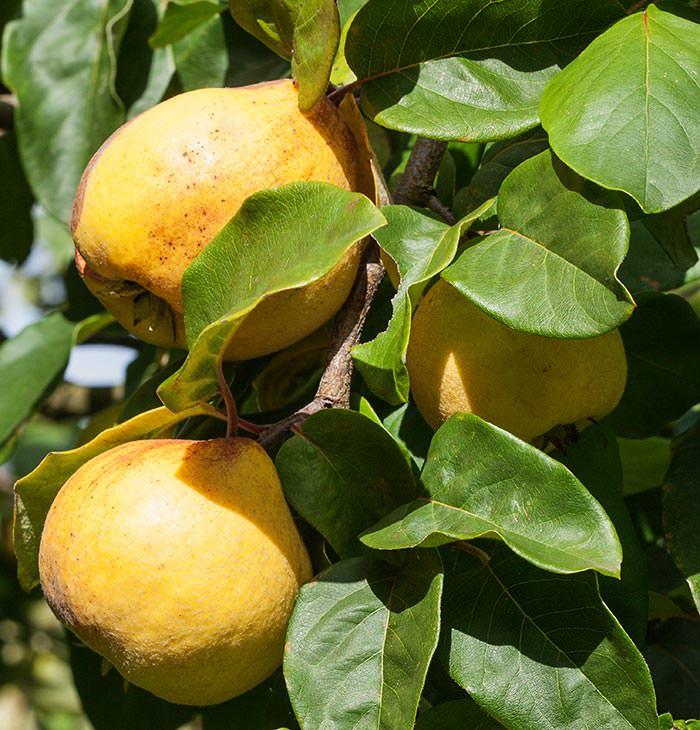
Quince Trees for Sale UK- pictured here is Ludovic variety.
Cydonia Oblonga Cydora Robusta
Quince Cydora Robusta is a variety bred specifically to produce a good crop of aromatic fruits that will keep for months if stored correctly.
Cydonia Oblonga Champion
True to its name, Quince Champion was created to perform splendidly in any garden, with particular resistance to wetter soils.
Cydonia Oblonga Leskovacka
Late to flower, Quince Leskovacka is a reliable cropper, with large, fragrant fruits that can weigh between 300 to 500 grams each.
All of these cultivars share the same notable qualities, but each offers something distinctive. Even though quince trees are quite undemanding, whichever variety you choose to grow in your garden, you will need some tips and tricks on how to best care for quince trees.
Caring For Quince Trees
Quince trees offer much, but ask very little in return. Any position with plenty of sun and well-drained soil will be ideal for planting a quince tree. These robust, tough trees are adaptable and fully hardy in the United Kingdom, and do not require any special conditions to thrive.
Considered to be low-maintenance, this heritage tree needs very little care to stay in good health. If you grow quince as a standard tree or a large shrub, you should prune it in the winter, when it is in its dormant phase, to promote regular fruiting and remove any congested branches. Quince trees can be fan-trained, as well, in which case you should pay particular attention not to damage their fruiting spurs (they are tip bearers, so they will be located at the tips of the branches).
When it comes to its susceptibility to common plant problems, quince trees have a good track record as quite resilient. All quinces are self-fertile, which means they do not need a pollination companion, as they bear good crops on their own. In case you want to promote even heavier cropping, mulch and fertilise in the spring. The added boost will encourage your quince to flower and fruit more prolifically.
As decorative as they are useful, quince trees are primarily grown for the abundant crops of their pear-shaped, scented fruits. However, the attractive features of these trees also make them an excellent choice for a specimen tree in the garden, or to be planted in a container and used to bring incredible fragrance to your patio.

